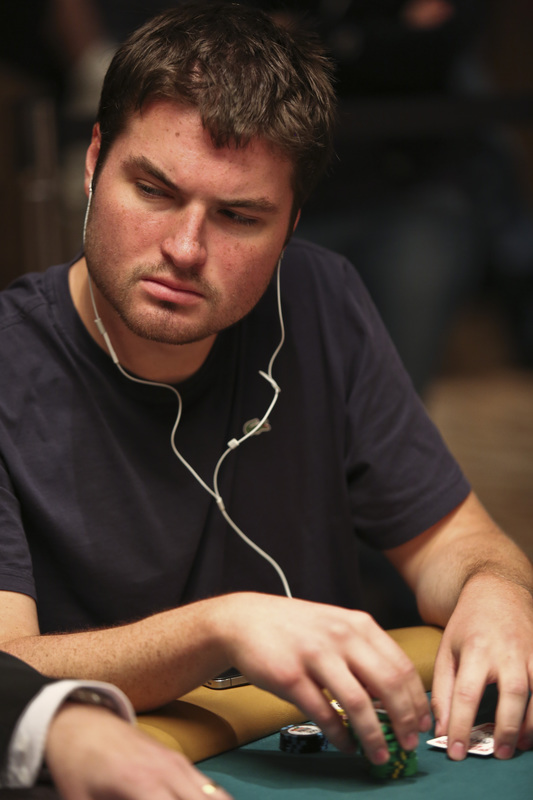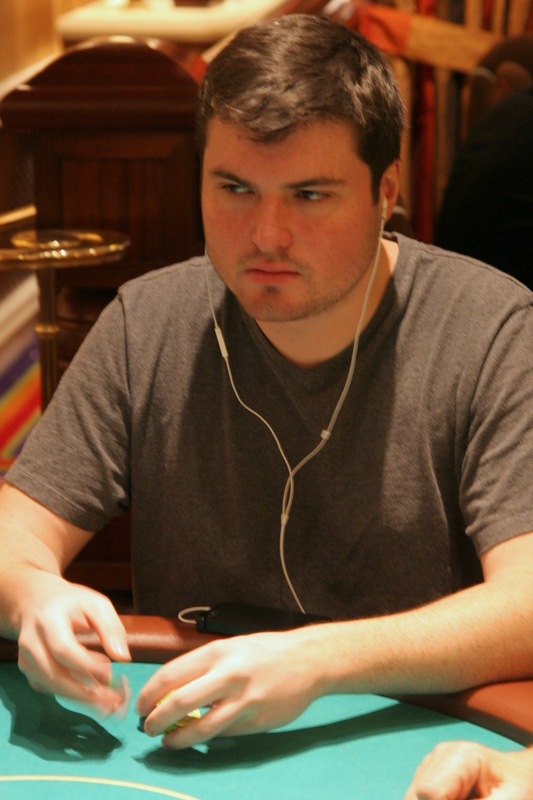






Poker Strategy: Final Table Takedown With Two-Time WPT Champion James CarrollCarroll Takes Card Player Through His Thought Process From Hands |
|
|

James Carroll is quietly putting up results that compare to poker’s best but has done it without the fanfare of the more famous names in the game. The Las Vegas pro has just shy of $4 million in tournament earnings over his career, including a seven-figure score from his World Poker Tour Bay 101 Shooting Star victory in 2014.
Carroll’s win in 2014 was his first WPT title and he recently added another one to his resume with a title in the WPT Seminole Hard Rock Poker Showdown main event. The win comes just a year after just missing out on a World Series of Poker bracelet, finishing runner-up in the $1,500 no-limit hold’em monster stack in 2018 for $640,916.
For his second WPT title, Carroll bested a massive 1,360-entry field and earned $715,175. He sat down with Card Player to take us through his thought process from key hands at the final table.
Hand 1
.jpg)
Concepts: Using early street action to dictate correct river bluffing frequencies
The Action: Jerry Wong raised to 425,000 from the cutoff and James Carroll defended his big blind. The flop was 10 5
5 3
3 and both players checked. The turn was the 7
and both players checked. The turn was the 7 and Carroll led out for 625,000. Wong called. The river was the 2
and Carroll led out for 625,000. Wong called. The river was the 2 and Carroll bet 2,400,000. Wong called.
and Carroll bet 2,400,000. Wong called.
Steve Schult: The big blind ante is still pretty new to poker tournaments. When you are playing out of the big blind, are you acting as if you have two big blinds invested? Or are you still playing hands the same way as when it was a traditional ante?
James Carroll: I probably tend to defend more than most people. I am fairly comfortable playing postflop out of position. I’m not making any significant changes.
SS: You decide to defend the big blind with 9h8h. Was there anything about Jerry’s play that led you to flat this hand instead of three-betting?

He’s not always calling or shoving there. He’s folding a fair amount. And with ICM, he can’t really be going too crazy against me. I think this was the worst hand I played at the final table.
I’m not sure at what frequency I would three-bet, but I definitely mix it in there versus him. I think that would have been a better play at that time.
SS: On the flop, it comes 10-high and you both check. When he checks behind, what do you make of his range?
JC: This is why the river bluff is so bad because when he checks back that flop, he’ll almost always have value hands that he’s not folding on the turn.
In my mind, I would expect him to bet his pure bluffs like A-8 offsuit and most likely bet his Broadway cards too. I think when he checks back, it’s going to be pairs between fives and 10s. He’ll possibly check back sets as well. And then sometimes he has some A-Qs and A-Js as well.
SS: Were you giving up on the flop against a bet?
JC: Absolutely. And the only turn that I bet is the seven.
SS: You get the seven on the turn and you bet 625,000. When he calls, do you think he can have some dry ace-highs here that you can barrel him off?
JC: I do think he has some ace-highs here. I do think he always calls with those hands enough of the time. There were two flush draws on the turn too. So, I think my lead turn is fine and his call is obviously good. But when the river comes, I think I should just be check-folding.
SS: We established that you made a mistake on the river, but what was your in-game thought process? What were you trying to get to fold?
JC: In my mind, I was trying to fold out some of his better ace-highs and his middling pairs like sixes. I block eights and nines, but he could have some fives like 6-5 suited or A-5 suited and hands like that.
I think that betting the river is really bad because I block eights and nines, he’s never folding a 10 and both flush draws missed. He’s going to be calling me with like third pair and might even call with ace-high there.
With my sizing, I was just trying to put some ICM pressure on him. I didn’t think through the hand well at all. As soon as I bet the river, I was like ‘What am I doing?’ I really just thought everything about it was very bad.
Hand 2
.jpg)
Concepts: Comparing the absolute value of your hand against your opponent’s range
The Action: James Carroll raised to 525,000 on the button and Maria Ho called out of the small blind. The flop was A J
J 5
5 and Ho checked. Carroll bet 575,000 and Ho called. The turn was the 9
and Ho checked. Carroll bet 575,000 and Ho called. The turn was the 9 and Ho checked again. Carroll bet 950,000 and Ho called. The river was the J
and Ho checked again. Carroll bet 950,000 and Ho called. The river was the J and both players checked.
and both players checked.
SS: You decide to raise J-2 suited on the button. Was this because you wanted to apply ICM pressure or is this standard?
JC: I mean, this is a standard open there. Me and [Maria Ho] have played a lot and I don’t think she’s going to be getting out of line there against me very much, if at all. Especially with three short stacks. And Chad was playing his big blind tighter than I thought he would.
Maybe it was just card distribution and he was getting like 9-2 offsuit, but he was folding his big blind very frequently at the final table. I thought it was a pretty standard open there.
SS: Do you think Maria should be three-betting A-Q out of the small blind? Or does it open her up to be exploited because of ICM considerations?

SS: Why did you decide to bet this flop as opposed to checking and trying to bluff catch some different runouts.
JC: There’s not very many good runouts for my hand, you know? I got probably the best one that I could ever get. I don’t expect her to be flatting too many aces there, so I felt like her range was more weighted towards pairs and suited connectors and some of the Broadways as well.
SS: What is your general game plan on these monotone flops?
JC: There is nothing that I really do all the time. I don’t always do something the exact same way. There are times that I definitely do check there and there are going to be times where I don’t bet the turn. I think I check the turn more often than I bet.
I would probably say that I probably don’t bet that turn that often. I just decided to put a little ICM pressure on her. I thought that she would be folding some better hands than me on the turn. I’m not betting for value at that point. On the flop, I was betting for protection and on the turn I was betting with the full intention of just not betting the river.
I thought maybe if I made two pair. I would be more inclined to bet a two than a jack there. I thought her range [on the flop] was more weighted towards Broadways, better jacks possibly with a flush draw, and possibly flushes as well. That’s why I didn’t bet the river.
Hand 3

Concepts: Using an alternative line to find an edge against a solid opponent
The Action: James Carroll completed the small blind and Maria Ho checked her option in the big blind. The flop was Q 5
5 3
3 and both players checked to the 2
and both players checked to the 2 turn. Carroll bet 800,000 and Ho called. The river was the K
turn. Carroll bet 800,000 and Ho called. The river was the K and Carroll bet 2,600,000. Ho called.
and Carroll bet 2,600,000. Ho called.
SS: Action folded to you in the small blind and Maria only had about 15 big blinds in the big blind. Why did you decide to just complete instead of shove on her?
JC: Shoving is completely fine there, but at that point I did not expect her to be shoving light over my limp. She does her homework. She’s going to be calling me 100 percent right. If I shove there, I allow her to play perfectly against me.
Which is fine and the shove is probably standard there, but in that spot, I just decided to try and go lower variance for me. I don’t want to double her up and I would’ve been short stacked if I shoved and lost.
SS: I just want to make sure I have the concept right. Are you just going to try and find an edge by taking a different preflop line?

SS: The flop checks through and that seems standard. On the turn, you pick up gutshot and a weak flush draw. One thing I noticed from your play was that whenever you picked up equity on the turn, you were betting. How weak does the draw have to be for you to want to check?
JC: That’s about the worst hand that I would bet there.
SS: Barreling the turn when you picked up equity, is that why you were able to stay at or near the top of the chip counts throughout the whole final table?
JC: To be honest, I haven’t really thought about it. I thought it was pretty standard. A lot of players don’t do it and maybe that’s why I build some bigger stacks. Maybe I’m taking spots that they don’t take and winning pots that they don’t win.
For the people that I talk poker with, this is standard.
SS: On the river, you hit the king. How did you decide on the river sizing and would you have folded to a shove since she only had slightly more than a min-raise behind?
JC: I’m not sure if I would have folded to a shove. It would’ve been a really tough spot. Usually my river sizings are fat. That was a super fortunate river. I was probably going to just check-fold unless I hit the 4 for the straight flush. Even if I hit a heart, I probably would have folded.
for the straight flush. Even if I hit a heart, I probably would have folded.
But I hit the perfect river and I sized up because she can’t really think that I have many kings in my range. So she’s going to be thinking that I wouldn’t be this sizing without at least a solid queen. And what queens would I have? It would be something like A-Q and she would expect me to shove those hands preflop.
I think when I size up, it gives her a better reason to hero me off. I’m not sure what she had, but she’s capable of calling me with like a five there. And if she did call with a five, I think her call is okay.
